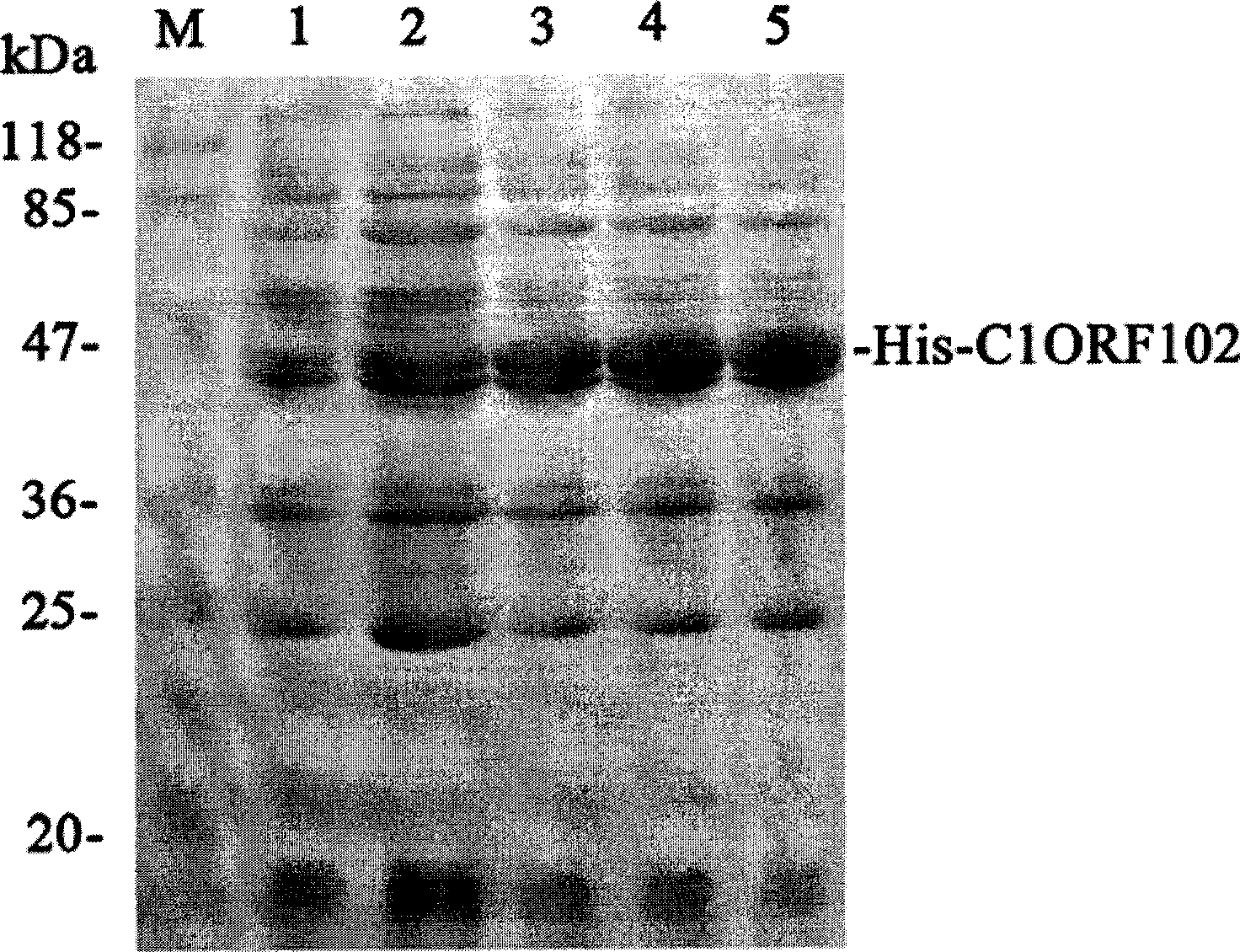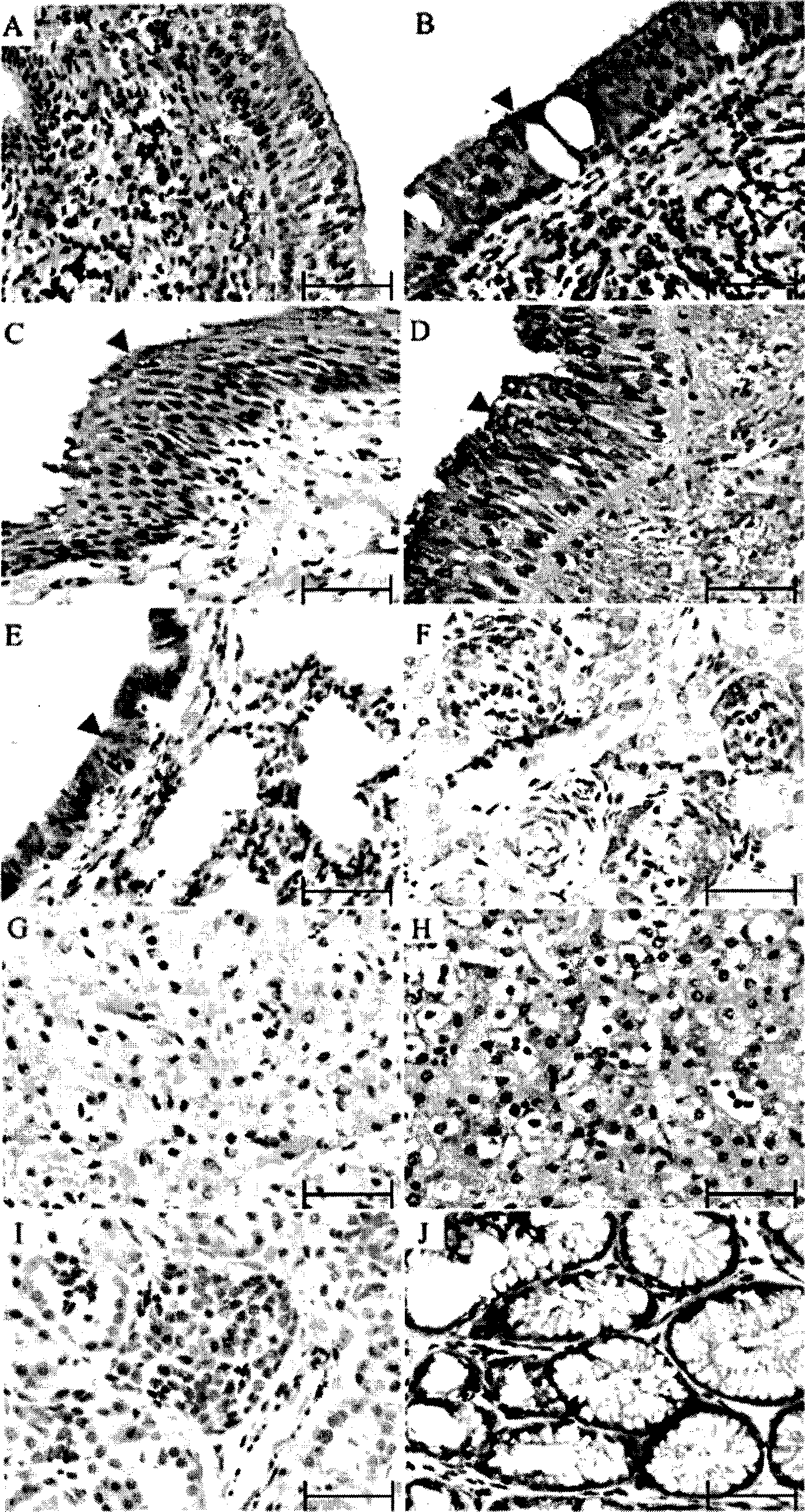Preparations of human rhinopharynx tissue specific gene C10RF102 coding protein, polyclonal antibody and monoclonal antibody thereof
A tissue-specific, protein-encoding technology, applied in the direction of anti-animal/human immunoglobulin, microbial-based methods, recombinant DNA technology, etc., can solve the lack of specificity in the diagnosis of nasopharyngeal carcinoma, and the lack of diagnostic indicators for nasopharyngeal carcinoma, etc. problems, to achieve the effects of high sensitivity, early detection, early treatment, and radical treatment
- Summary
- Abstract
- Description
- Claims
- Application Information
AI Technical Summary
Problems solved by technology
Method used
Image
Examples
Embodiment 1
[0023]1) Prokaryotic expression of His-C1ORF102 fusion protein: ① Design specific primers according to the C1ORF102 gene reference sequence (GenebankAccession NM_145047), C1ORF102-forward: 5'-ATACATATGTCGGTGCGCACGTTACCG-3', C1ORF102-reverse: 5'-CTCGAGCTATAACTCATCCATCAT-3'. The 5' end of the primer sequence has an Nde I restriction site, and the 3' end primer has an Xho I restriction site. ② Using the human fetal brain cDNA library plasmid (product of Clontech) as a template, PCR amplified the coding region of the C1ORF102 gene, and recovered the PCR product band. Nde I and Xho I were used to digest the PCR product and the pET28b vector (commercialized expression vector from Novagen). The gel recovery kit recovered the linear 5.3kb vector and C1ORF102 gene coding region. ③The pET28b vector was connected with the C1ORF102 gene to construct a fusion gene in line with the reading frame. Escherichia coli JM109 was transformed with the pET28b-C1ORF102 plasmid containing the fusion...
Embodiment 2
[0026] Antibody preparation of protein encoded by C1ORF102:
[0027] Preparation of C1ORF102-encoded protein polyclonal antibody: Harvest and purify the fusion protein to immunize rabbits, the first dose is 400ug / kg, boost once on the 3rd day with a dose of 200ug / kg, and continue to boost once on the 28th day with a dose of 200ug / kg, one week Antiserum was obtained after blood collection. The antiserum was first precipitated hemoglobin and albumin with n-octanoic acid, centrifuged to remove the precipitate, and the supernatant was used at 50% saturation (NH4) 2 SO 4 The solution is precipitated, centrifuged, and the supernatant is removed, and the precipitate is the immunoglobulin IgG component, and the obtained is an anti-C1ORF102 polyclonal antibody. Affinity chromatography purification kit from Pierce Company was used for affinity chromatography, and the specific steps were strictly followed the instructions of Pierce Company to purify anti-C1ORF102 IgG, which was then pu...
PUM
 Login to View More
Login to View More Abstract
Description
Claims
Application Information
 Login to View More
Login to View More - R&D
- Intellectual Property
- Life Sciences
- Materials
- Tech Scout
- Unparalleled Data Quality
- Higher Quality Content
- 60% Fewer Hallucinations
Browse by: Latest US Patents, China's latest patents, Technical Efficacy Thesaurus, Application Domain, Technology Topic, Popular Technical Reports.
© 2025 PatSnap. All rights reserved.Legal|Privacy policy|Modern Slavery Act Transparency Statement|Sitemap|About US| Contact US: help@patsnap.com



